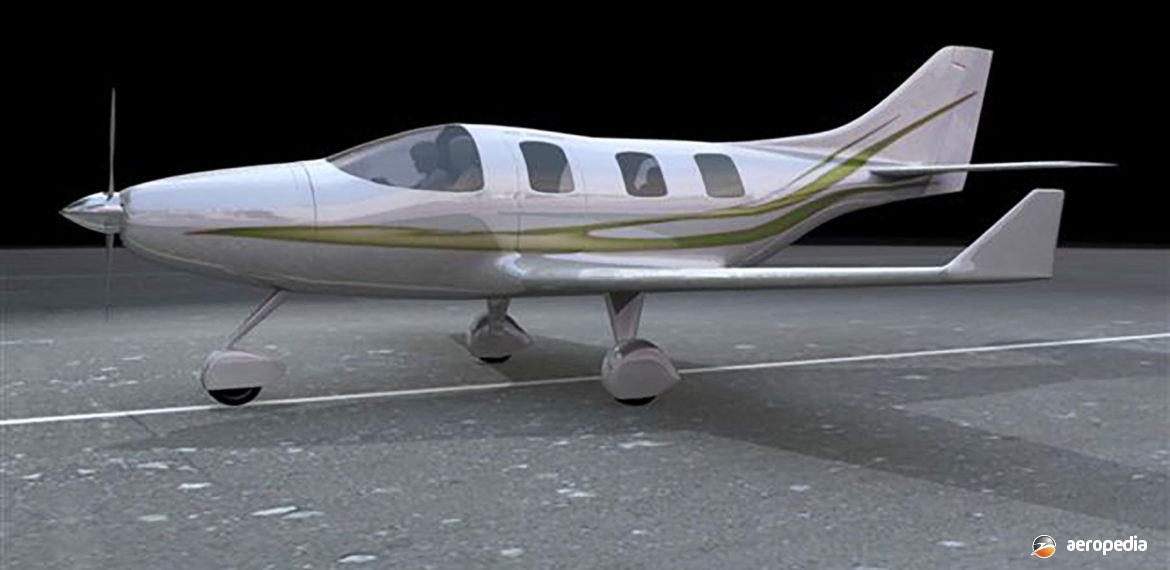Photograph:
An Artist’s impression of the Australian Lightwing SP-6200 (Australian Lightwing)
Country of origin:
Australia
Description:
Light sport and touring aircraft
Power Plant:
TBA
Specifications:
- Max speed: 296 m/h (184 mph)
- Cruising speed: 250 km/h (155 mph)
- Range: 1,852 km (1,151 miles)
- Fuel capacity: 200 litres (44 Imp gals)
History:
Australian Lightwing, formerly known as Hughes Aircraft of Ballina, NSW, since 1985, has designed, developed and produced a series of light aircraft for the Australian market, having, by the end of 2009, delivered 175 aircraft with some 20 percent of these sold in kit form. Examples have been exported to a number of countries, including Europe and the USA.
In 2009 the Company announced it was developing the SP-6000, which later became known as the SP-6200, which would seat from two to six and would be available in kit-form only. It featured a carbon fibre fuselage with a diameter of 1.5 m (4 ft 10 in), milled on what was described as Australia’s largest CNC mill located near Cairns, QLD, and was expected to be light enough to meet RAAus Regulations. The six-seat variant, depending on the engine fitted, would be registered as a general aviation type in the Experimental Category, fitted with a variety of engines. The wing was to be built on Australian Lightwings own CNC machine and was of 6061T6 aluminium.
A range of engines was proposed for the new aircraft, depending on the regulations to which each individual aircraft was built. Because of the cost of certification of a new aircraft type, Australian Lightwing looked at building the aircraft in China and supplying it as a kit to proposed builders who would be able to fit the engine they wished and register the aircraft under the Experimental Category.
Engines proposed included four or six-cylinder Lycoming piston engines, the Supermarine V-6 and V-8, and the Allison 250 and Walter turbines, in a single tractor type configuration. Initial design plans were for twin pusher Rotax engines mounted on the rear fuselage on small pylons but this configuration was dropped. Another proposal was for two Rotomax two-cylinder turbocharged rotary engines. The Company also announced it was developing a two-stroke fuel-injected geared liquid-cooled V-6 engine with full electronic management to be installed.
Initial proposals were for the prototype to have two Rotax 914 turbocharged engines in pusher configuration and registered under RAA Regulations. It would have a glass cockpit and an autopilot, and would be built by the Hughes Group at its Ballina, NSW facility. Work on the prototype was to commence in late 2010 with a first flight expected to take place in 2011 but being delayed until 2014. The Company proposed to have a live-in style builder program for customers at the Ballina facility to produce the aircraft. However, by early 2020 the prototype was not known to have been completed and flown.

